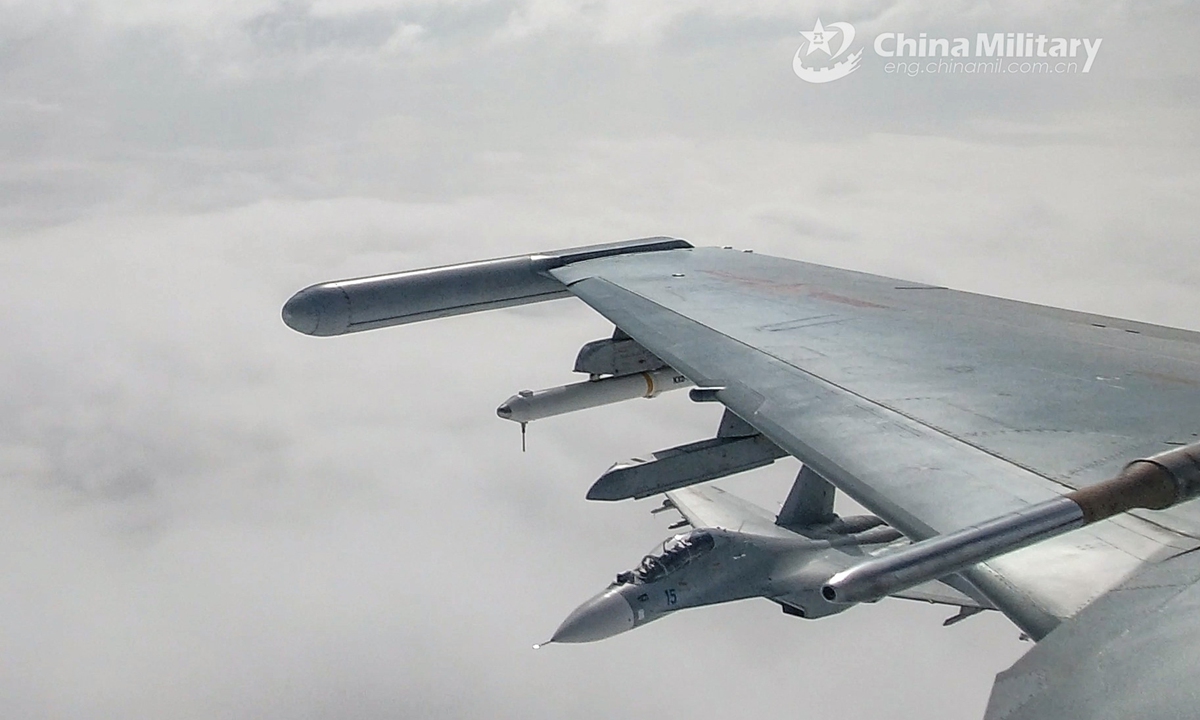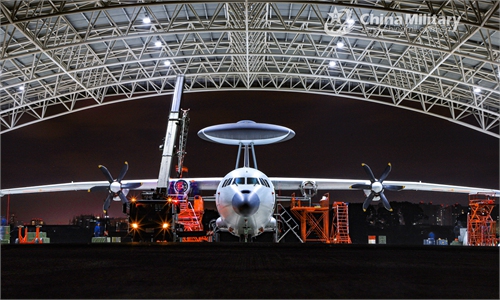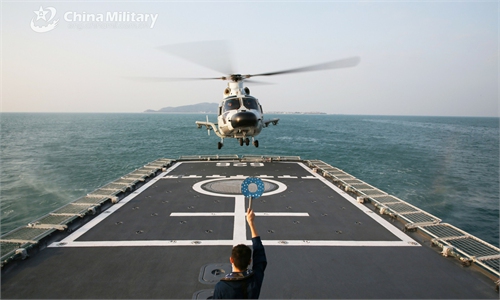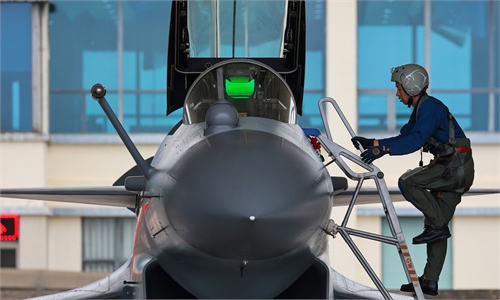PLA sent more warplanes near Taiwan island than DPP authority claimed: China's Defense Ministry

A pilot assigned to a naval aviation brigade under the PLA Eastern Theater Command manipulates his fighter during a flight training mission on December 16, 2021. Photo:China Military
The Chinese People's Liberation Army (PLA) sent a larger number of warplanes for drills near Taiwan in 2021 than the figure recently claimed by the island's secessionist Democratic Progressive Party (DPP) authority, China's Defense Ministry revealed on Thursday.
It reflects the poor detection capability of Taiwan's armed forces, which could be disastrous for them if conflict breaks out, Chinese mainland experts said.
According to media reports, the DPP authority recently hyped so-called threats from the Chinese mainland, claiming that more than 940 PLA warplanes entered Taiwan's self-proclaimed air defense identification zone in 2021, doubling the combined sum of that in 2019 and 2020.
A US Department of Defense official also recently suggested that the higher number of PLA operations around the island of Taiwan has increased the risk of misjudgment among armed forces in the Indo-Pacific region, so it is an urgent mission to enhance Taiwan's "self defense" capabilities.
Responding to this suggestion, Senior Colonel Tan Kefei, a spokesperson from China's Ministry of National Defense, said at a routine press conference on Thursday that the source of the current tensions in the Taiwan Straits is the provocative seeking of "independence" by DPP authority and "Taiwan independence" secessionist forces, as well as external forces' attempts to use Taiwan to contain China.
It is the PLA's responsibility to safeguard national sovereignty, safety and deter "Taiwan independence" secessionist actions, Tan said.
During the past year, the PLA routinely organized aircraft including bombers, reconnaissance aircraft and fighter jets for patrol missions around the island of Taiwan, routinely conducted joint combat alert patrols featuring multiple military branches close to the island of Taiwan, and routinely held realistic scenario combat exercises, including joint maritime assault, joint land attack and joint air defense combat drills near the island of Taiwan, Tan said.
"The number of aircraft sorties is higher, not lower, than the figure the DPP authorities hyped," Tan revealed.
The goal is very clear: to counter the vile acts of frequent collusions between secessionist and foreign forces to challenge the one-China principle with resolute actions, firmly safeguard national sovereignty and territorial safety, and safeguard the common well-being of compatriots from both sides of the Straits and peace and stability in the region, Tan pointed out.
Fu Qianshao, a Chinese mainland military aviation expert, told the Global Times on Thursday that the reason why Taiwan defense authorities reported less PLA warplanes than the real figure could be the lack of technical capabilities to detect them.
It is possible that the radars used by Taiwan's armed forces could not recognize aircraft clearly, Fu said. "If two aircraft fly closely together, they might have counted them as one."
Taiwan's warplane also likely dared not to fly too close to the PLA aircraft to confirm the exact number, Fu said, noting that if the PLA deployed electronic jamming technology, Taiwan would lose track of all targets.
The PLA also has the stealth-capable J-20 fighter jet in its arsenal, observers said.
"What will happen if a conflict really breaks out?" Fu asked, as he pointed out that this exposed a big problem for the armed forces on the island.




